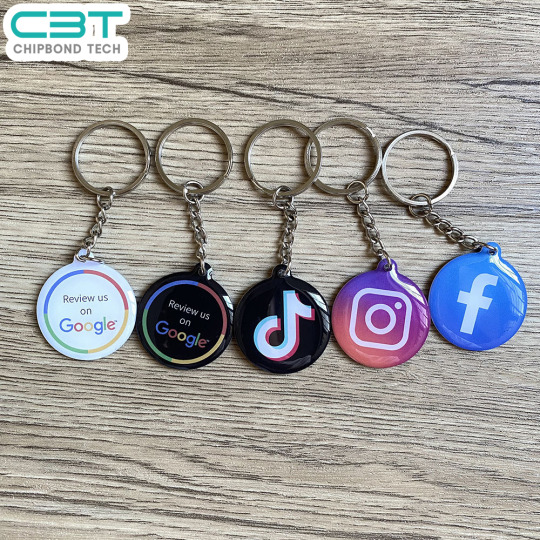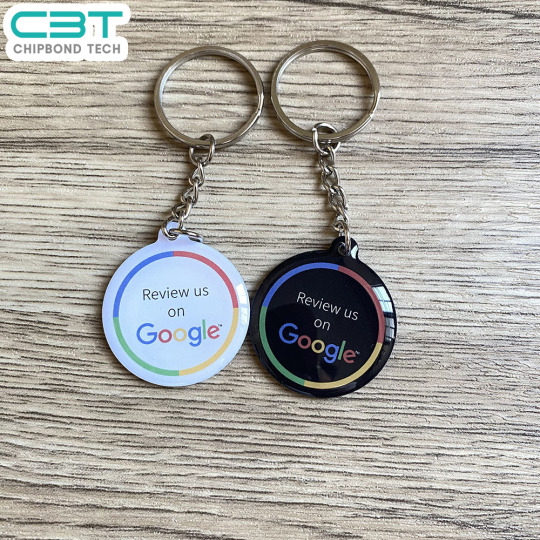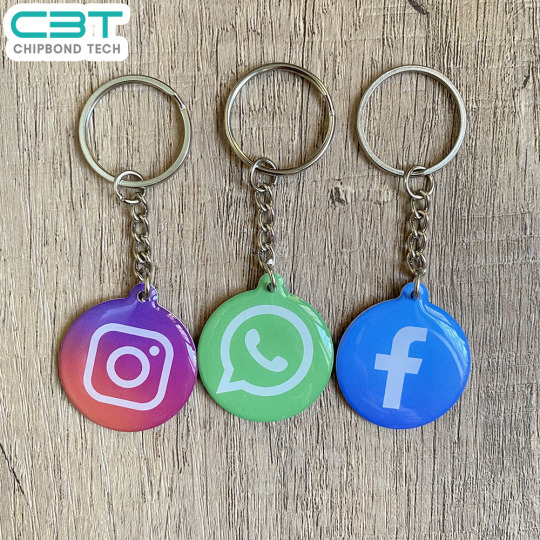Don't wanna be here? Send us removal request.
Text




CBT | Premium IC / ID Blank Card – Customizable Designs
Looking for high-quality IC/ID blank cards? We offer a wide range of options to meet your needs:
IC Card
ID Card
Hotel Key Card
UID Card
CUID Card
5200 Card
External Chip Card
CPU Card
Portrait Card
✅ Custom printing & personalization available ✅ Multiple chip types to choose from
📩 Email: [email protected] 🌐 Website: www.chipbond.com
NFC #RFID #ICcard #IDcard #SmartCard #AccessControl #HotelKeyCard
0 notes
Text




🚀 NFC Google Stand | RFID-Enabled NFC Display - CBT
Our NFC Google Stand is crafted from high-transparency acrylic with an embedded NFC chip, seamlessly combining brand display with instant interaction.
📌 Key Highlights:
Tap & Go: With a simple tap, users can instantly access your Google page, website, or any custom link.
Integrated Aesthetics: Crystal-clear acrylic, lightweight and durable—perfect for receptions, trade shows, retail counters, and more.
Customizable Design: Support for brand logos, signature colors, and personalized content—ensuring every interaction reflects your unique brand identity.
Waterproof & Durable: Premium materials make it waterproof, moisture-resistant, drop-resistant, and long-lasting.
💡 Illuminate your brand experience with technology—making communication more efficient and elegant. The NFC Google Stand brings your brand within easy reach.
Contact us: 📩 [email protected] 🌐 www.chipbond.com
NFC #Google #BrandEngagement #O2O #AcrylicDisplay #Chipbond
0 notes
Text




CBT: Custom PVC Magnetic Stripe Cards & RFID/NFC Solutions
📍 Why Choose Us 🏭 100,002㎡ facility, 100+ employees, multiple RFID tag production lines 🌍 RFID/NFC products exported to 100+ countries
Our Advantages
28 Years of Expertise — Recognized National High-Tech Enterprise in the RFID industry
Advanced Manufacturing — 10,000㎡ Class 100,000 cleanroom with German printing, encapsulation, lamination, die-cutting, and testing equipment
Technical Excellence — Skilled R&D team, microwave anechoic chamber, antenna design, product support, and integration advice
Quality You Can Trust — Strategic partnerships with top chip manufacturers ensure stable supply & consistent quality
One-Stop Service — From design to delivery, professional consultation, fast response, and ongoing support
Factory Direct — No middleman, competitive pricing, and reliable supply chain
Contact Us 📩 [email protected] 🌐 www.chipbond.com
RFID #PVCcards #MagneticStripeCards #SmartCards #CardManufacturer #NFC #ChipTechnology #FactoryDirect
0 notes
Text




✨ PVC Blank Cards | Custom Manufacturing Available We specialize in producing high-quality PVC blank cards and white cards, ideal for printing membership cards, access cards, staff ID badges, student cards, and more.
✅ OEM & Custom Printing Supported ✅ Made with premium new PVC material – scratch-free surface with a pure white base ✅ High-gloss printing finish for vibrant, sharp color output ✅ Customizable in size, thickness, and chip options ✅ Direct factory supply with stable lead times and guaranteed quality
Whether you need bulk production or personalized card customization, we provide one-on-one professional design services to help you build a standout brand image with efficiency.
Contact us: 📩 [email protected] 🌐 www.chipbond.com
PVCcards #BlankCards #CardManufacturer #CustomPrinting #OEMService #RFIDcards
0 notes
Text




🏨 RFID Smart Hotel Key Card
🔧 Features ✅ High-Quality Chip Fast and reliable reading for smooth access control.
✅ Pure Copper Induction Coil Sensitive and durable with strong, stable signal.
✅ Premium PVC Material Durable, scratch-resistant, and smooth to the touch.
✅ Various Custom Finishes Available Gold/silver foil stamping, UV printing, laser coding, inkjet, and more.
📦 Applications Hotel room access Membership & loyalty cards Apartment or smart lock access Corporate gift or ID cards
💼 Why Choose CBT? 💰 Lower Cost Competitive pricing helps you lead the market.
⚡ Faster Turnaround Rapid production & flexible customization.
🤝 Better Service Reliable support and long-term partnerships.
📞 Contact Us Today Get samples & pricing now. Let’s unlock smart hotel solutions together! 📩 [email protected] 🌐 www.chipbond.com
CustomSmartCard #NFCcard #RFIDcard #PVCcard #SmartLockCard #AccessControl #SmartCardManufacturer
0 notes
Text




CBT | Professional NFC Card ManufacturerUnlock the Power of Smart Cards
📶 NFC Smart Cards | Premium Customization Services
🌟 Made with brand-new PVC material – clean, smooth, and durable card surfaces
🧠 Compatible with various mainstream chip models (MIFARE, NTAG, ICODE, etc.)
🖨️ Stock of blank white cards available & diverse printing customization (logos, graphics, encoding)
🏭 Factory direct sales – transparent pricing and fast delivery
✅ Rigorous multi-step quality inspections to ensure performance and compatibility
Contact us: 📩 [email protected] 🌐 www.chipbond.com
NFCcard #SmartCardManufacturer #PVCcard
0 notes
Text




CBT is a professional manufacturer of RFID / NFC smart cards, with its own factory and multiple advanced production lines. With an annual output of over 40 million cards, our products are exported across China and worldwide.
We specialize in producing a wide range of RFID and chip cards including:
· RFID Inlay
· Epoxy cards
· Key fob tags
· PVC blank cards
Custom sizes, chip types, and designs are available to suit your specific industry needs.
✅ In-house production ensures stable supply ✅ Multiple chip and size options ✅ Factory direct with OEM/ODM support ✅ Serving access control, transportation, payment, logistics, retail, and more
Choose CBT — for professionalism, efficiency, and reliability.
📩 Contact us: [email protected] 🌐 Website: www.chipbond.com
RFIDforAccessControl #NFC #RFIDFactoryChina #SmartCardOEMODM
0 notes
Text




💡 Looking for a reliable RFID inlay supplier? 📌 28 Years of Expertise With 28 years of deep industry experience, we specialize in delivering reliable, high-quality RFID inlay products for smart cards worldwide. 📌 Strong Production Capability Equipped with advanced automated machinery and efficient production lines, we ensure fast turnaround and scalable delivery. 📌 Advanced Technology, Outstanding Performance Multiple antenna technologies available: Ultrasonic, Aluminum Etching, Pre-winding ✅ Ultra-flat surface ✅ Excellent reading & writing performance ✅ Durable and stable 📌 Flexible Customization Various layout options (A4, 3×7, 4×10, etc.) Thickness range: ± 0.84mm Perfectly suited for ISO standard cards and special applications like ultra-thin cards. 📌 Strict Quality Control Compliant with ISO standards, our inlays are manufactured under a rigorous quality management system to ensure stable, consistent performance. Contact us: 📩 [email protected] 🌐 www.chipbond.com #RFID #SmartCard #Inlay #RFIDInlay #OEM
0 notes
Text




Custom Contactless NFC Cards
✅ High-Quality Materials Made from premium, brand-new PVC Built-in chip for convenience and durability Lightweight and easy to carry
✅ Waterproof & Bend-Resistant Tough PVC construction Long-lasting, flexible, and resistant to daily wear
✅ Enhanced Coil Performance Reinforced coil for faster recognition Integrated UHF chip ensures stable read/write operations
✅ Fast & Responsive Sensing Genuine materials with strict quality control Fully functional with quick and accurate sensing
Contact us: 📩 [email protected] 🌐 www.chipbond.com
NFCCards #SmartCard #CustomNFC #PVCCard #RFIDSolutions
0 notes
Text




🌟 CBT | Premium Hotel Key Cards – Elevate the Guest Experience In an era where smart technology and sustainability go hand in hand, a hotel key card is more than just a room key — it’s a reflection of your brand. CBT provides high-end hotels with key card solutions that are secure, eco-friendly, and intelligent. ♻️ Eco-Friendly & Durable PVC / PET Natural wood Biodegradable plastics 🔐 Smart Identification Powered by RFID / NFC technology, Anti-cloning and tamper-resistant Supports integrated “One Card” access (door locks, elevators, power control) 🎨 Custom Design for Brand Impact Make a lasting impression on your guests: Customizable with your hotel logo Premium finishes: foil stamping, silk screen, UV, embossing, and more ⚡ Responsive & Seamless Use Fast, smooth scanning for every guest Combines luxury feel with advanced technology for an elevated first impression CBT – More than a card. It's part of your guest experience. 📩 [email protected] 🌐 www.chipbond.com #RFID #NFC #SmartHotel #HotelTechnology #LuxuryHotel #CBT #HotelKeyCards
0 notes
Text




🆓 Smart RFID Blocking Card | Free Samples · Free Design · Worry-Free After-Sales 💳 Add a layer of protection to your personal data!
🟤 Premium Matte Finish Subtle grain texture|Scratch-resistant|Fingerprint-resistant Smooth to the touch, with a refined, high-quality feel.
💧 Waterproof & Flame Retardant Made with high-strength PVC — same material as bank cards ✔ Waterproof|✔ Flexible|✔ Heat-resistant
🔒 Effective RFID Signal Blocking Built-in shielding chip Prevents unauthorized scanning of credit cards, ID badges, and access cards Protects your private information from data theft.
🔁 Durable & Flexible High flexibility|Corrosion-resistant|Bend-resistant Long-lasting performance for daily and long-term use.
🎨 High-Definition Printing Printed with imported Heidelberg press ✔ Vivid colors|✔ Crisp details|✔ Boosts brand recognition
📦 Contact us for free samples ✅ Custom design support | ✅ Low MOQ trial orders | ✅ Full after-sales service
📩 Contact us: [email protected] 🌐 Learn more: www.chipbond.com
RFIDBlockingCard #SmartCard #RFIDTechnology #PVCCard #CustomCards #OEMODM
0 notes
Text
RFID NFC Card: Select the chip model according to the requirements.
rfidcard #nfccard #rfidchip #nfcchip
0 notes
Text
RFID NFC Card: Select the chip model according to the requirements.
rfidcard #nfccard #rfidchip #nfcchip
0 notes
Text




🔹 NFC Keychain Epoxy Tag 🔹
We are excited to introduce our durable 30mm waterproof NFC epoxy coin tag, designed for versatile applications such as access control, smart marketing, and social media interaction.
✅ Operates at 13.56MHz ✅ 144 bytes memory capacity ✅ Reading distance: 1–5 cm ✅ ISO 14443A compliant ✅ Operating temperature: -25°C to +60°C ✅ Certified for quality and reliability
With its epoxy-coated waterproof design, this NFC keychain is built for performance and longevity.
Contact us: 📩 [email protected] 🌐 www.chipbond.com
NFC #EpoxyTag #SmartAccess #RFID #KeychainTag #IoT #AccessControl
0 notes
Text




🚀 Unleash the Power of NFC Technology with Customized Stickers/Tags!
We provide fully customizable NFC/RFID solutions: ✅ Tailored size/shape/chip options (NTAG213/215/216, etc.) ✅ Brandable surfaces (logos/QR codes/designs) ✅ Encryption-enabled for secure access/anti-counterfeiting
📌 Versatile Applications:
Mobile payments & access control
Public transport fare collection
Membership management
Interactive smart posters
Digital business cards
Library systems
Contact us: 📩 [email protected] 🌐 www.chipbond.com
NFC #RFID #Tags #Stickers #ContactlessSolutions #IoT
0 notes
Text
NFC Hotel Key Card – Safeguarding Customer Privacy and Security
nfchotel #rfidkeycard #customized #chipbond
0 notes
Text
Wooden RFID NFC Cards for Hotels & Memberships – Eco-Friendly Access with a Touch #rfidcard #woodencard #nfccard #hotel
0 notes